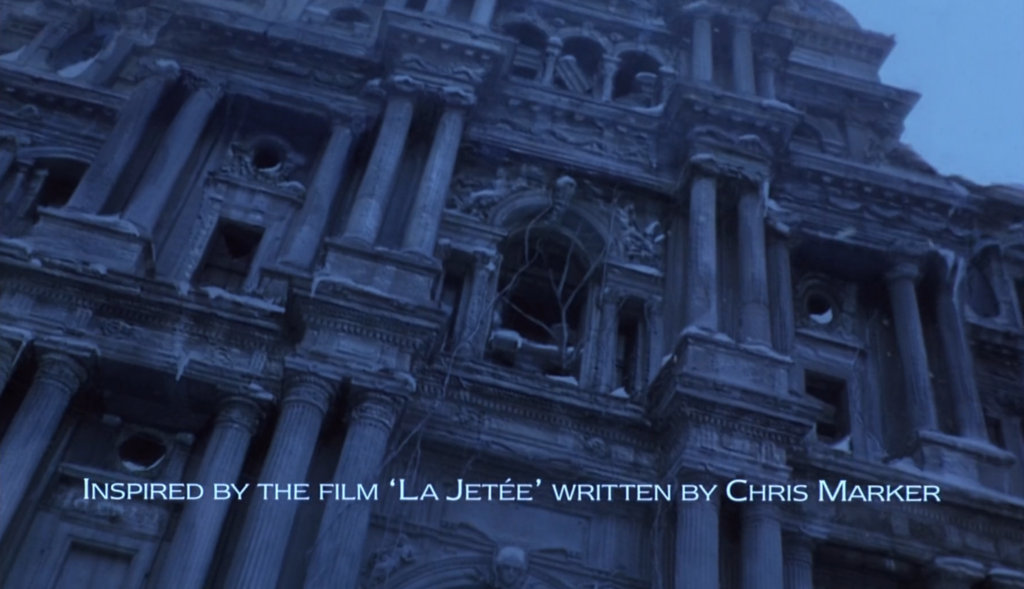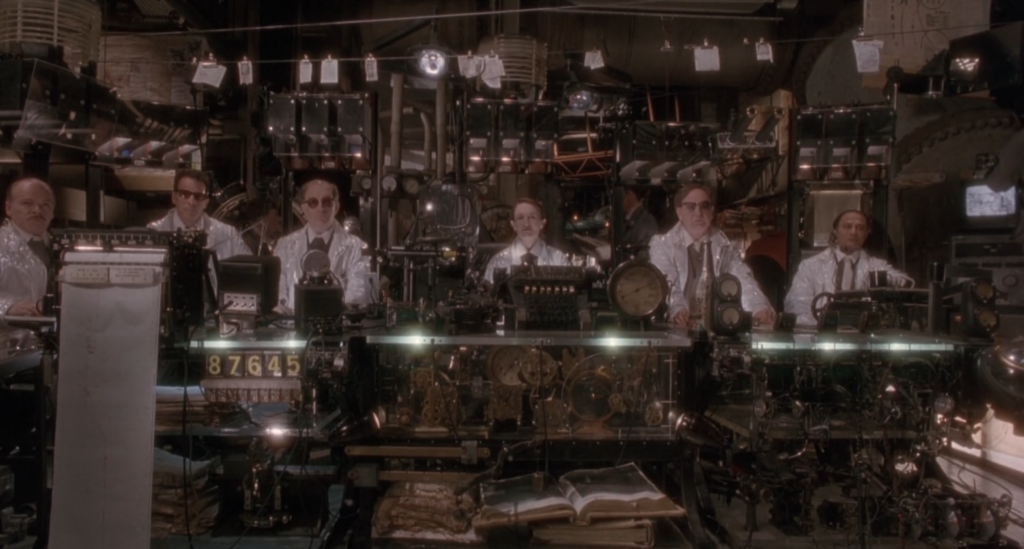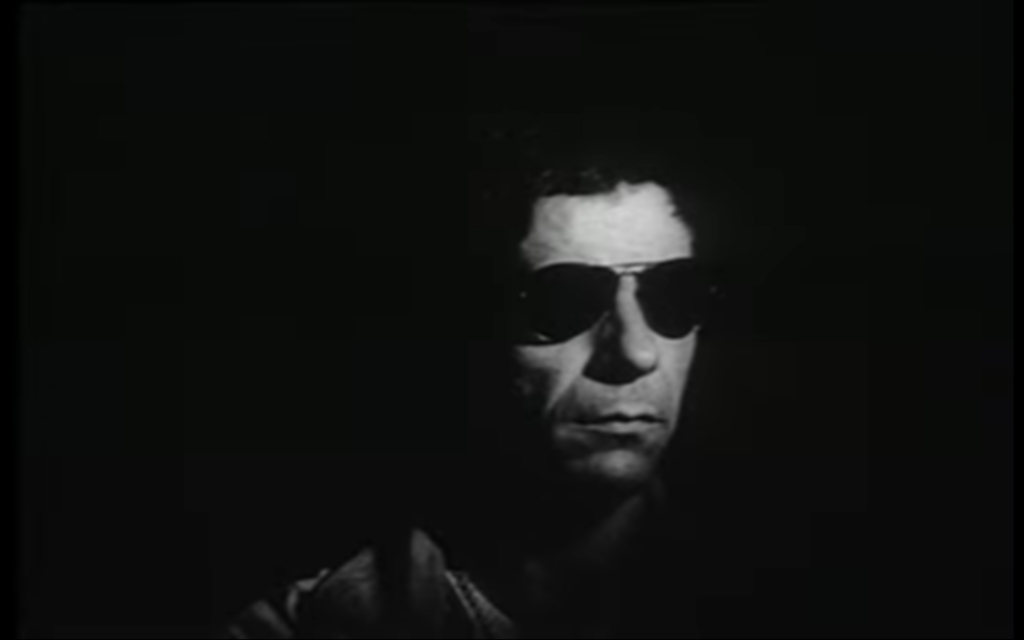Probably my favourite film of all time is Terry Gilliam’s 12 Monkeys. It’s a fantastic film that explores our perception of time, insanity, and the desperate measures we may go to in order to save mankind. But there is an acknowledgement at the opening of the film that tells us where the film gets much of its plot.
In this post I will spoil the endings of both 12 Monkeys and La Jetée.
Discovering La Jetée
When I was younger I was obsessed with 12 Monkeys. I love how it seems to break reality, leaving you questioning what is real and what isn’t just as much as Bruce Willis’ character does. I love the crazy visuals representing the future. I love Brad Pitt’s performance. I love how it simultaneously follows both a linear and non-linear path through time. And I love how, at it’s heart, it’s a tragic romance.
I must have watched this film 100 times over by now. Every single time I would pick up on another subtle detail. One time I noticed something I hadn’t spotted before. Right in front of my eyes there was a credit given to the film that had inspired this one. It had been there every time I watched this movie, yet somehow I missed it.

This film was inspired by another film called La Jetée? What was this movie? I had to know what this film was. This was sometime in the early 2000s, so digital media hadn’t really taken off yet. I had to travel to Liverpool and pore through every single DVD I could find in search of this film. It was clearly a French film, so searching the foreign film sections was a good start.
Eventually I managed to find it. A double feature with two of Chris Marker’s films: La Jetée and San Soleil. I purchased it and rushed back home, eager to see the work that inspired my favourite film of all time. I had no idea what I was in for.
Inspiration
La Jetée, a film by Chris Marker, was released in 1962. Watching the film you can clearly see how it inspired 12 Monkeys. The overall story is essentially the same.
Last chance to avoid spoilers for both movies.
A young boy sees a man shot down on a pier (or in an airport). That boy goes to grow up in, and survive, World War 3. With the surface unlivable, scientists start experimenting with time travel. Our protagonist is picked for these experiments, and travels to the past where he falls in love with a woman. When his mission is over, he begs to be sent to the past one last time. He goes back, and sees the love of his life waiting for him on the same pier we saw at the beginning of the film, only to be shot down. As he dies he notices a boy witnessing his death. A boy that he realises is his younger self.
Both movies follow this basic plot, though there are some differences. In La Jetée, the protagonist’s childhood memory of seeing someone shot is the reason that they are chosen for the experiment, and the reason they adapt to it well. In 12 Monkeys the protagonist is a prisoner forced into the experiment. His traumatic memory makes him prone to violence, especially in the extreme situations he ends up in. It could be read as a reason he adapts to time travel so well, but it’s never explicitly stated.
In La Jetée time travel works differently. The protagonist exists in both the future and the past at the same time, whereas in 12 Monkeys his entire physical body is sent to the past. The romantic interest refers to the protagonist as a “ghost”, implying his presence is more like that of a ghost than a living being.

12 Monkeys gives our protagonist a simpler mission. He’s being sent to the past to learn who created a virus that wiped out most of humanity. In La Jetée it was a world war that destroyed the world, and the experiments are preparation for travelling to the future, where a solution is found for humanity’s survival.
Outside of these differences, 12 Monkeys also expands the story a lot. Adding in new, fleshed out characters, and creating a mystery surrounding the origin of the virus. It also sucks the viewer into the protagonists mental breakdown, at times leaving us questioning if the future is real or it’s all a schizophrenic fantasy in the protagonists head.
12 Monkeys obviously owes a lot to La Jetée, but it also creates its own unique story and themes surrounding mental illness and the future of humanity. The themes of each film are very different, with 12 monkeys focusing less on the romance (which is messy and complicated in the film thanks to the time travel), and more on the nature of reality and how your perception of it can easily be broken.
La Jetée
La Jetée is part of the French New Wave Movement that emerged in the late 1950s. It is told through still images that flash through the screen in montage, with a voiceover telling us the story.
The still images we are shown often feel animated at times. In one sequence, our protagonist starts to lose his mind as he is experimented on. The series of images shows his face becoming more and more distraught, eventually biting the bedsheets he lies on as he struggles to break free of the bonds that tie him down.
Visually the future looks a little bit steampunk (before steampunk was really a thing). It’s a visual style that’s had some influence on 12 Monkeys’ version of the future as well. If you break it down they’ve used very simple props: glasses, eye bandages, wires. And yet it all works and you still feel you are trapped in the darkness.
With this style of film, sound design is especially important, and the film excels here. Whether a choir evoking dark emotions, to the faint heartbeat of a patient, or the whispers of scientists in the background, the sound helps to place you in the protagonists story.
Everything put together, the film almost feels like a stylised documentary. Using images of the experiments and the past, to weave a story of how humanity was saved, and the ultimate fate of our tragic hero.

Early on in the story we are told that Paris was all but wiped out by a Third World War. We are shown images of the city being destroyed, and the ruins that remain afterwards.
Later, we hear whispers of the scientists experimenting on the protagonist. Being a French film, it’s surprising to hear that they are in fact speaking German. Given the context of another world war, it invokes the medical experiments performed by the Nazis during the Holocaust.
It’s a film that fears another Great War, showing the possible future we may create if we have another. Some of the imagery in the film reminds you of World War II, which would have been even more noticeable in a country that was liberated from Nazi occupation less than two decades before.
Others who have analysed the film have said that it is about not being able to escape from the past. Putting this in the context of the World Wars, it is perhaps a warning of what will happen if we can’t escape from our past. Given the recent rise in small scale wars, it is perhaps becoming more of a prophecy.




